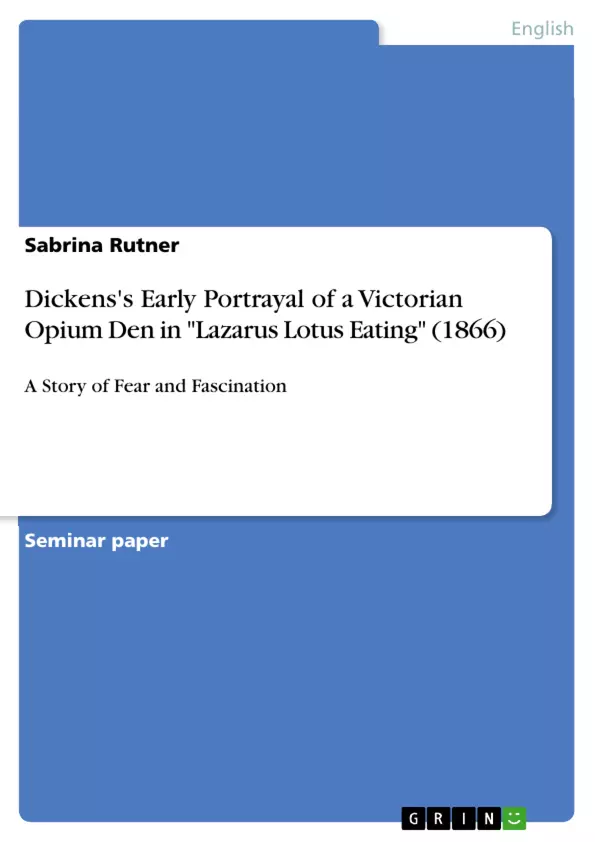The magazine article “Lazarus Lotus Eating” is often mentioned in academic literature as the first published Victorian nineteenth-century journalistic article which was indicative of a shift in the portrayal of opium dens.
The article is especially noteworthy it is still more ambiguous and complex in its attitude towards the Orient than the journalistic articles and fictional opium-den-portrayals that would follow it. Hence, in “Lazarus Lotus Eating” the narrator undergoes a great change as his initial racist and xenophile attitude towards the Oriental foreigners changes drastically in the course of the story to feelings of pity and empathy for the poor, pathetic and miserable Oriental opium addicts.
However, there are very few academic texts which provide detailed analysis of Dickens's “Lazarus Lotus Eating” which is necessary to understand the article in its full extent. Academic research has thus not yet fully spotted the article’s ambiguous attitude towards the Orient which constantly alternates between fear and fascination.
The paper seeks to close this gap in research by analyzing how Dickens depicts the ambivalent British attitude towards the Orient in his article “Lazarus Lotus Eating” through the portrayal of Lazarus, the opium den, the Oriental opium smokers, the opium master Yahee and the English women in the opium den.
- Quote paper
- Sabrina Rutner (Author), 2016, Dickens's Early Portrayal of a Victorian Opium Den in "Lazarus Lotus Eating" (1866), Munich, GRIN Verlag, https://www.grin.com/document/369942



